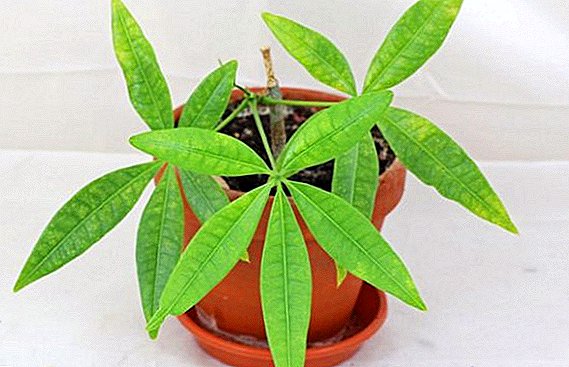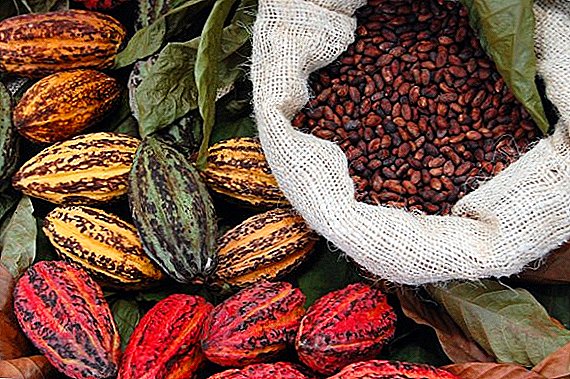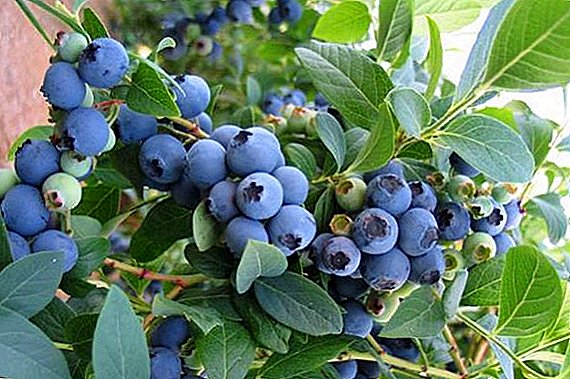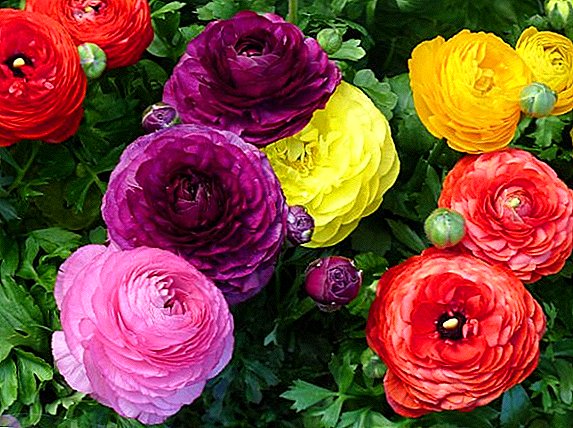 Buttercup garden - beautiful and unpretentious in the care of the flower, its bud is a bit like a rose, and in popularity, at one time, he even overshadowed the tulip. For a period, the buttercup was forgotten, until the breeders started breeding varieties with bright buds of various shades.
Buttercup garden - beautiful and unpretentious in the care of the flower, its bud is a bit like a rose, and in popularity, at one time, he even overshadowed the tulip. For a period, the buttercup was forgotten, until the breeders started breeding varieties with bright buds of various shades.
Growing buttercups yourself from seed

Growing buttercups from seeds is a bit of a hassle.
Collecting planting material from their colors is problematic, and germination will be low, so it is best to buy seeds in a special store.
Optimal sowing time
When self-collecting seed material, it is desirable to remove it from the first flowered buds, as this will preserve the characteristics of the plant.
When performing the procedure, it is advisable to wrap the bud with gauze so that the seeds do not wake up. Sowing is carried out in the last decade of February or in the first week of March.
Important! Buttercup, grown from seed, will bloom only in the second year.
Capacity and soil for sowing
Seeds are sown in seedling boxes or containers, in pre-prepared light soil (peat land, leaf soil and sand in a ratio of 1: 1: 0.5), deepening them by one centimeter. On top of the seedlings sprinkled with soil and moistened with a spray.
Seedling care
 The container with seeds is covered with glass and left in the room, the temperature of which should be maintained at + 10 ... +12 ºC. Room with seedlings should be regularly ventilated and monitor the condensate on the glass surface.
The container with seeds is covered with glass and left in the room, the temperature of which should be maintained at + 10 ... +12 ºC. Room with seedlings should be regularly ventilated and monitor the condensate on the glass surface.
After three weeks, when the first shoots appear, transfer the capacity with the crops to the lighted and warmer place. The southern window sill would be ideal, but the seeds from direct sunlight should be covered. The temperature in this room should not fall below +20 ºC.
When about five leaves appear on the seedlings of the garden buttercup, transplant them into peat cups, adding humus to the peat.
Planting buttercups in the garden
Buttercup tubers should be purchased in March and stored before planting in a warm ventilated place. If you grew seedlings yourself, consider that the buttercup does not tolerate the transplant. Seedlings are usually planted in peat tablets and planted in open ground in them.
When to plant
Buttercups are planted in the spring, in the middle of May, when the soil and the air are warm enough. The optimal place for a plant is a territory with light penumbra closed from drafts: it is possible, next to a not too spreading tree or tall shrubs.
Important! Under direct sunlight, buttercups bloom only slightly and not for long.
How to plant
 Before planting buttercups in open ground, you need to choose the right neighbors. Against the background of large and bright colors, the buttercup will be invisible. Moreover, this plant is an invader and, if it is planted too close to other plants, it will begin to grow and occupy space for its root system.
Before planting buttercups in open ground, you need to choose the right neighbors. Against the background of large and bright colors, the buttercup will be invisible. Moreover, this plant is an invader and, if it is planted too close to other plants, it will begin to grow and occupy space for its root system.
Before planting, the tubers of buttercups are soaked in water or a weak solution of manganese for 12 hours. The soil should be light and loose, not acidic. Before direct planting the soil is fertilized with humus. When the roots of the plants spread out from moisture - you can start planting.
Dig five holes at a height of about five cm to the tubers and a place for drainage, about twenty centimeters between the holes. Sprinkle the tubers with the stem down into the hole with drainage, sprinkle with soil and pour (not abundantly).
Features care for buttercups in the garden
Buttercup care is trite: follow the rules for watering, feeding and caring for the soil.
Did you know? There is a memory about a buttercup in history: the apothecary Lorenzo prepared a sleeping potion from Shakespeare's Juliet from the poisonous juice of the plant. The dream was so strong that it was taken for death.
How to organize watering
 Watering the buttercups needs to be done regularly, but moderately, with a strong over-wetting of the soil, the root system will start to rot. In the rainy period, it is desirable to cover the plant film. During the flowering period, watering is gradually reduced and completely stopped when the buds bloom and the leaves turn yellow.
Watering the buttercups needs to be done regularly, but moderately, with a strong over-wetting of the soil, the root system will start to rot. In the rainy period, it is desirable to cover the plant film. During the flowering period, watering is gradually reduced and completely stopped when the buds bloom and the leaves turn yellow.
Weeding and loosening the soil
For growing buttercups, it is important to maintain the friability of the soil, since the root system needs oxygen. Be sure to weed and clean the soil from weeds, dry leaves, fallen dry inflorescences and twigs.
Top dressing and fertilizer
During the development of the seedling and the formation of leaves, the plant is fed twice a month with fertilizers, including nitrogen, which stimulates its growth and weight.
The best option is "Kemira-Universal". At the time of the budding and development of flower buds, the plant is fed with potassium and phosphorus compounds (also twice a month).
Cropping flowers
 When the plant begins to bloom it is necessary to remove dried shoots and inflorescences, especially during the period of rapid flowering. Since the buttercups bloom unevenly, the timely removal of faded buds will retain the decorative appearance and continue flowering until the first half of August.
When the plant begins to bloom it is necessary to remove dried shoots and inflorescences, especially during the period of rapid flowering. Since the buttercups bloom unevenly, the timely removal of faded buds will retain the decorative appearance and continue flowering until the first half of August.
Interesting! There is a legend about the origin of buttercups. The greedy merchant wanted to force him to marry his daughter for a beloved person. In the hearts of the girl scattered the wealth of her father on the ground, coins, endowed with the power of her resentment, turned into flowers.
Dispelling buttercups
Under all the necessary conditions, correct forcing will make the buttercup bloom within three months. Therefore, the timing of planting depends on the desired timing of obtaining buds. Usually, the distillation is performed from August to November.
Buttercups are planted in garden soil mixed with sand and humus. Tubers horns down deepen into the soil by three cm and covered with soil. If the seedlings are dry, before planting, hold them in a solution of epin for several hours.
For the procedure at home it is very important to observe the temperature: +10 ° C when landing, not higher than +20 ° C with further development. At very high temperatures, the plant grows heavily and loses presentable.
Proper storage of tubers in winter
 In September, when the leaves and stalks of the plant are completely dry, the tubercles of buttercups need to be dug. Consider, the rhizome of buttercups is fragile, so you need to be extremely careful to dig them out and clean them from the ground.
In September, when the leaves and stalks of the plant are completely dry, the tubercles of buttercups need to be dug. Consider, the rhizome of buttercups is fragile, so you need to be extremely careful to dig them out and clean them from the ground.
Peeled rhizomes are freed from babies, and for disinfection they are kept in the foundation solution for half an hour, then they are dried well for about four days.
Dried root bulbs should be stored in a paper bag, in a cloth bag, in moss or peat pot, the main thing is a dry, cool place, for example, a basement.
During the winter period, check the condition of the bulbs regularly: if you find those affected by the fungus, treat them with green. A plant that is too corroded by the disease must be thrown away to avoid damaging healthy specimens.
After the winter, sort out the planting material, pick dried or rotted, weak bulbs, and prepare the rest for planting.
It is simply impossible to tell everything about buttercups - the whole book will turn out, but the recommendations given above will help you to decorate your garden with another decorative one that is worthy of attention and admiration for the plant.












